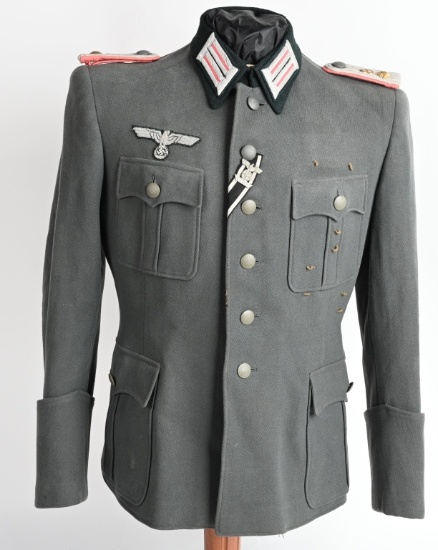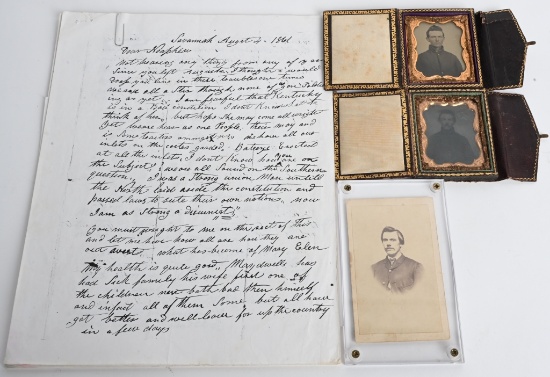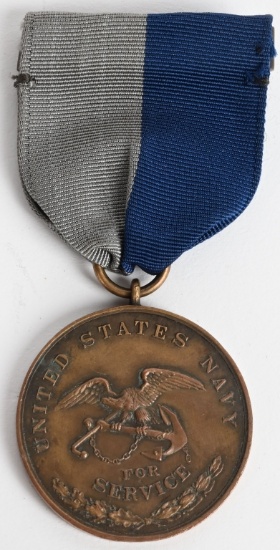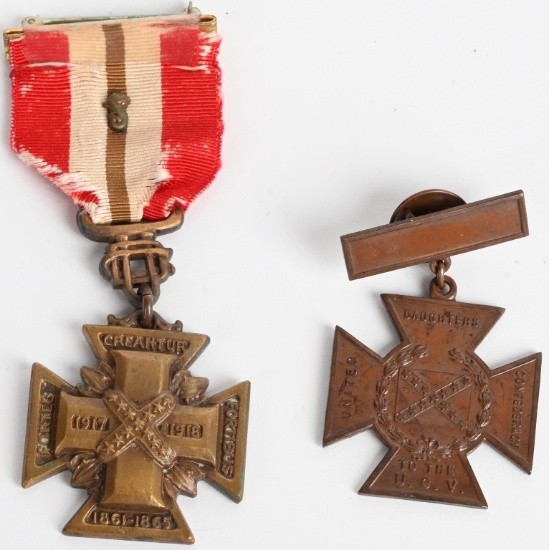Lot # 14 (Sale Order: 15 of 784)
Low Estimate: 1,100High Estimate: 1,500
10 letters, 5 from LIBBY PRISON, letters from the 116th Ohio Volunteer Infantry officer Lieutenant Levi Lupton plus 5 letters before he was captured, 2 with 116th Company C Headquarters stationary. Levi was captured June 14, 1863 at Winchester where the 116th suffered 8 killed, 29 wounded and 141 captured, 74% casualties, facing the Louisiana Tigers. He was sent to Libby Prison in Richmond, then to Macon Georgia, and finally to Charleston Race Course Prison, SC where he would die. He is buried at Beaufort National Cemetery, SC. His widow would die in 1913 in Delaware, Ohio. Writing is ledgible and all letters transcribed. in the Libby Prison Letters (three are addressed from “Libby Prison and two are addressed from Libby Prison Hospital or Libby Hospital. From Libby Prison he writes on June 26th, 1863 “We have plenty to eat of plain fare but no extras. Our captors have treated us very well, but it is very tiresome here and I do hope that they will exchange us or parole us soon. …..There is about 250 officers here in prisoners. There is about 30 of our men here, among them is Evans, Adams, Booth, Beardmore, Preshaw and a number of others. Capt. Arckenoe is dead. Heck and two others are wounded......” Another letter from Libby on Dec. 19th, 1863 includes “...There was two men got out about one week ago. They bribed the guards. 6 more have tried since and got detected. It is a very dangerous experiment to try to tamper with the guards and as to the paying part that would be out of my power as I am very near out of money....” Service The 116th Ohio Infantry was organized Marietta and Gallipolis, Ohio, and mustered in September 18, 1862, for three years service under the command of Colonel James Washburn. Companies F and K mustered in October 28, 1862, and joined regiment at Buckhannon, Virginia. The regiment was attached to Railroad Division, West Virginia, to January 1863. Romney, West Virginia, Defenses of the Upper Potomac, VIII Corps, Middle Department, to March 1863. 1st Brigade, 2nd Division, VIII Corps, Middle Department, to June 1863. 1st Brigade, Elliott's Command, VIII Corps, to July 1863. 1st Brigade, 1st Division, Department of the Susquehanna, July 1863. McReynolds' Command, Martinsburg, West Virginia, Department of West Virginia, to December 1863. 1st Brigade, 1st Division, West Virginia, to April 1864. 1st Brigade. 1st Infantry Division, West Virginia, to December 1864. 1st Brigade, Independent Division, XXIV Corps, Army of the James, to June 1865. The 116th Ohio Infantry mustered out of service June 14, 1865, at Richmond, Virginia. Companies F and K were consolidated with the 62nd Ohio Infantry. Detailed service This regiment was organized at Gallipolis and Marietta in Sept. and Oct.,1862, to serve for three years. On Oct. 16 it moved to Belpre, crossed the river to Parkersburg, and was immediately transported to Clarksburg, W. Va. Its first engagement was at Moorefield where it lost 2 or 3 men slightly wounded by fragments of shell, and about 20 were captured on the picket line. After a little scouting and foraging in the Moorefield Valley, the regiment moved to Romney, where it had about 50 men captured while guarding a forage train. In June Co. A and I participated in an engagement at Bunker Hill and lost about half their number in killed and captured, the remainder making their escape with great difficulty. It was comparatively idle, so far as fighting was concerned, until the spring of 1864, when it started up the Shenandoah Valley under Gen. Sigel. It participated in two charges at Piedmont losing 176 men killed and wounded, and at Lynchburg it also lost several men. The regiment fought with courage at Snicker's Ferry and participated in a charge which had much to do in deciding the fortunes of the day. At the Battle of Halltown it lost quite heavily and was engaged with slight loss at Berryville. It participated in the Battle of the Opequan, losing 4 killed and 22 wounded, and at the Battle of Fisher's Hill it charged a battery in the angle of the Confederate works, receiving the enemy's fire when only 100 yards distant, but rushed in and captured the battery in the very smoke of its discharge, losing 1 man killed and 4 wounded. It participated in the general engagement at Cedar creek and remained in that vicinity until December, when it joined the Army of the James. In the spring of 1865 it was engaged almost constantly, participated in the assault on Fort Gregg and then joined in the pursuit of the Confederates. It was mustered out on June 14, 1865. Casualties The regiment lost a total of 185 men during service; 4 officers and 90 enlisted men killed or mortally wounded, 3 officers and 88 enlisted men died of disease.
10 letters, 5 from LIBBY PRISON, letters from the 116th Ohio Volunteer Infantry officer Lieutenant Levi Lupton plus 5 letters before he was captured, 2 with 116th Company
...more C Headquarters stationary. Levi was captured June 14, 1863 at Winchester where the 116th suffered 8 killed, 29 wounded and 141 captured, 74% casualties, facing the Louisiana Tigers. He was sent to Libby Prison in Richmond, then to Macon Georgia, and finally to Charleston Race Course Prison, SC where he would die. He is buried at Beaufort National Cemetery, SC. His widow would die in 1913 in Delaware, Ohio. Writing is ledgible and all letters transcribed. in the Libby Prison Letters (three are addressed from “Libby Prison and two are addressed from Libby Prison Hospital or Libby Hospital. From Libby Prison he writes on June 26th, 1863 “We have plenty to eat of plain fare but no extras. Our captors have treated us very well, but it is very tiresome here and I do hope that they will exchange us or parole us soon. …..There is about 250 officers here in prisoners. There is about 30 of our men here, among them is Evans, Adams, Booth, Beardmore, Preshaw and a number of others. Capt. Arckenoe is dead. Heck and two others are wounded......” Another letter from Libby on Dec. 19th, 1863 includes “...There was two men got out about one week ago. They bribed the guards. 6 more have tried since and got detected. It is a very dangerous experiment to try to tamper with the guards and as to the paying part that would be out of my power as I am very near out of money....” Service The 116th Ohio Infantry was organized Marietta and Gallipolis, Ohio, and mustered in September 18, 1862, for three years service under the command of Colonel James Washburn. Companies F and K mustered in October 28, 1862, and joined regiment at Buckhannon, Virginia. The regiment was attached to Railroad Division, West Virginia, to January 1863. Romney, West Virginia, Defenses of the Upper Potomac, VIII Corps, Middle Department, to March 1863. 1st Brigade, 2nd Division, VIII Corps, Middle Department, to June 1863. 1st Brigade, Elliott's Command, VIII Corps, to July 1863. 1st Brigade, 1st Division, Department of the Susquehanna, July 1863. McReynolds' Command, Martinsburg, West Virginia, Department of West Virginia, to December 1863. 1st Brigade, 1st Division, West Virginia, to April 1864. 1st Brigade. 1st Infantry Division, West Virginia, to December 1864. 1st Brigade, Independent Division, XXIV Corps, Army of the James, to June 1865. The 116th Ohio Infantry mustered out of service June 14, 1865, at Richmond, Virginia. Companies F and K were consolidated with the 62nd Ohio Infantry. Detailed service This regiment was organized at Gallipolis and Marietta in Sept. and Oct.,1862, to serve for three years. On Oct. 16 it moved to Belpre, crossed the river to Parkersburg, and was immediately transported to Clarksburg, W. Va. Its first engagement was at Moorefield where it lost 2 or 3 men slightly wounded by fragments of shell, and about 20 were captured on the picket line. After a little scouting and foraging in the Moorefield Valley, the regiment moved to Romney, where it had about 50 men captured while guarding a forage train. In June Co. A and I participated in an engagement at Bunker Hill and lost about half their number in killed and captured, the remainder making their escape with great difficulty. It was comparatively idle, so far as fighting was concerned, until the spring of 1864, when it started up the Shenandoah Valley under Gen. Sigel. It participated in two charges at Piedmont losing 176 men killed and wounded, and at Lynchburg it also lost several men. The regiment fought with courage at Snicker's Ferry and participated in a charge which had much to do in deciding the fortunes of the day. At the Battle of Halltown it lost quite heavily and was engaged with slight loss at Berryville. It participated in the Battle of the Opequan, losing 4 killed and 22 wounded, and at the Battle of Fisher's Hill it charged a battery in the angle of the Confederate works, receiving the enemy's fire when only 100 yards distant, but rushed in and captured the battery in the very smoke of its discharge, losing 1 man killed and 4 wounded. It participated in the general engagement at Cedar creek and remained in that vicinity until December, when it joined the Army of the James. In the spring of 1865 it was engaged almost constantly, participated in the assault on Fort Gregg and then joined in the pursuit of the Confederates. It was mustered out on June 14, 1865. Casualties The regiment lost a total of 185 men during service; 4 officers and 90 enlisted men killed or mortally wounded, 3 officers and 88 enlisted men died of disease.less...



 x Cancel
x Cancel























